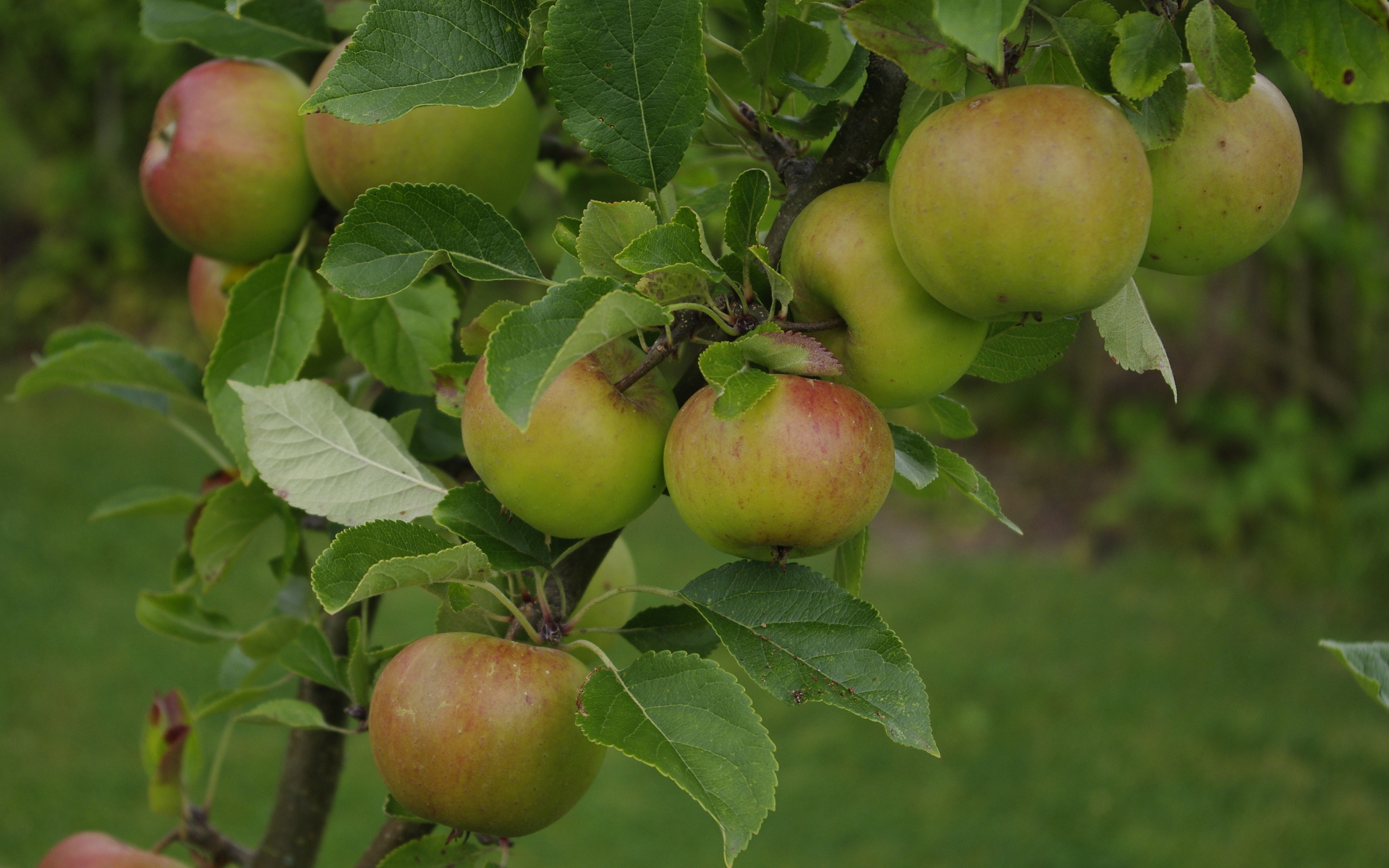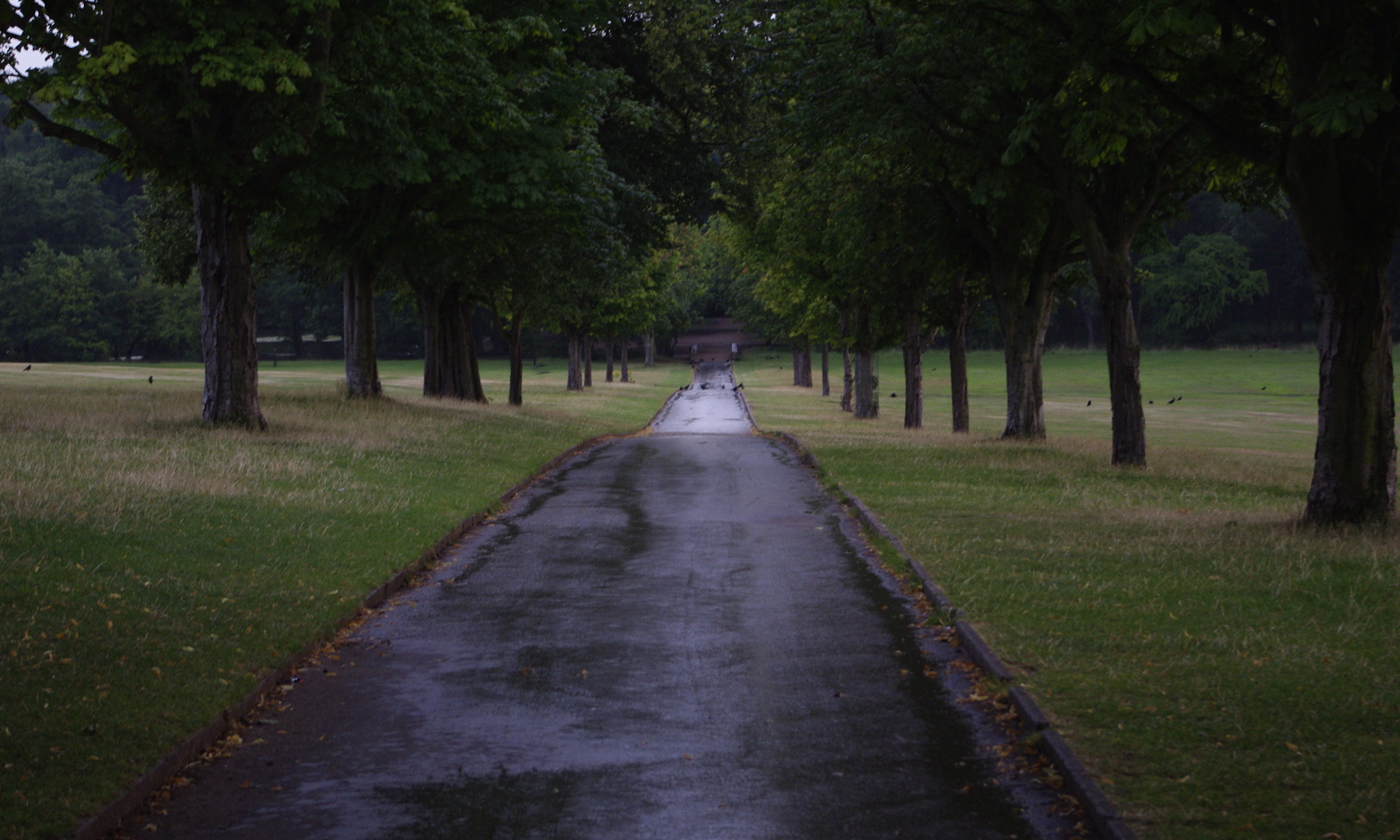 Quite often, pictures really are about noticing the moment, and recording the beauty. This water drop, hanging from a seed-head, arrested my attention one morning this week. For this picture, I’ve cropped down the original image, leaving enough background to harmonise with the reflection in the droop itself.
Quite often, pictures really are about noticing the moment, and recording the beauty. This water drop, hanging from a seed-head, arrested my attention one morning this week. For this picture, I’ve cropped down the original image, leaving enough background to harmonise with the reflection in the droop itself.
Monthly Archives: September 2015
Alphabet Photography Project: A is for Apple
 … As any good alphabet book will tell you. I know, because I had one. In all my years, I haven’t forgotten this valuable piece of information. What the alphabet books don’t tell you, however, is just how visually amazing apples are, when you look at them carefully. Marvellous in shape, outline, and patterns of marking. Just take a few moments to look at something as well-known as this, and perhaps It will convince you how blind we often are.
… As any good alphabet book will tell you. I know, because I had one. In all my years, I haven’t forgotten this valuable piece of information. What the alphabet books don’t tell you, however, is just how visually amazing apples are, when you look at them carefully. Marvellous in shape, outline, and patterns of marking. Just take a few moments to look at something as well-known as this, and perhaps It will convince you how blind we often are.
I’m taking the ‘Alphabet Challenge’ that has once again begun here, at Podcast.
It's kind to share!My Sunday Photo: 20 September 2015
 This shot is another foray into the idea of ‘negative space’ where a subject sits in a large background area. I loved the colours in this home-grown apple, but didn’t want to just fill the frame with it. The dark slats of this garden table make a contrast, illustrating two concepts connected with autumn: fruitfulness, but also, sometimes, a lot of dullness. This seemed to work for me.
This shot is another foray into the idea of ‘negative space’ where a subject sits in a large background area. I loved the colours in this home-grown apple, but didn’t want to just fill the frame with it. The dark slats of this garden table make a contrast, illustrating two concepts connected with autumn: fruitfulness, but also, sometimes, a lot of dullness. This seemed to work for me.
A Man’s Point of View: Maternity Care – A Few Thoughts
OK, maybe I should say Point of Review in my title, because a review is exactly what’s currently happening in this area. Comment is being invited; I must say, right now, that I wouldn’t have known about this were it not for a lovely group of folk, mainly mums themselves, who powerfully and constructively air this topic on Twitter and also blog about it. You might care to have a look here.
So we all have the chance, then, perhaps as never before, to reflect on trends in maternity care, and contribute to debate and discussion. A chance not to be missed, and one that should be taken up as positively as possible. Taking a broad view, I think our input could be considered to fall into three main areas.
Firstly, I think it’s only fair to make acknowledgement of the aspects that we don’t need to fix because they ain’t broke (as the saying goes.) This is actually very important, because otherwise, we are in danger of merely trading gains for losses; after decades of public sector manoeuvring, we should be more alert to this pitfall than we often are!
Next, we should look at what improvements have been made along the way, and suggest how these could be extended, remembering that the ride so far has not been an easy one, and some of the scenes along the way have been beautiful, others very painful.
Finally, we should examine all aspects of decline in this area of healthcare, and do so in uncompromising detail. This is not blame culture; it is working together to carefully and compassionately eliminate, or correct, what has, quite simply, got worse.
But before we can begin these tasks effectively, we must think more fundamentally, more basically, even than this. We must set out a central aim, defining in principle that we want to provide. This will then be our measuring stick, our touchstone, for existing practices and new ideas. So what, exactly, should this aim be? This is a most important consideration, because a disjointed babble, or nebulous murmuring, however well-meant – and justified, even – each individual contribution may be, is unlikely to achieve very much.
I would put forward a central aim something like this:
“To review and revise maternity care, from conception to birth and beyond, so as to optimise, as far as reasonably practicable, the combination of safety and fulfilment.”
Now, when you think about it, this is really our aim in all areas of practical life, or at any rate, it should be. It extends to our work, our home life, and all the things like going shopping, meeting friends, going on holiday… all those things that the insurance world put under the heading ‘social, domestic and pleasure’. We don’t, of course, document it all; at work, yes, because the law requires it, which is reasonable. But never-the-less, in all parts of our lives, two things are going on that we mostly take for granted; indeed we are being bombarded with both of them every day. They are potential risks and opportunities for fulfilment. Often subconsciously, we take action to minimise the risks, and maximise the opportunities. A little further reflection makes it easy to see that these considerations extend beyond what is only physical. Finishing a piece of work can not only earn money, but can also contribute to self-respect and sense of achievement. But as I work, I take precautions so as not to injure myself. I’m sure we can all think of lots more positive and negative examples. These will include what is physical, emotional, or psychological. Let’s look briefly at these two key factors in our aim.
Safety could be said to be the opposite of danger, which is the risk of harm or injury. It is sometimes put forward that, where we can see danger in advance, we can deal with it in three ways: we can eliminate it, segregate ourselves from it, or protect ourselves against it. Note that as we view a risk, we should always consider those options in that order. For everyday examples we might note that some car manufacturers now use water-borne paint (which is non-flammable and has low toxicity) a worker in wood uses a pushing-stick to guide a small work-piece through a big machine, and an operative wears a mask if a job creates dust. Easy stuff, eh? But…
Fulfilment is much harder to quantify. (I shall come back to this.) For the moment, I’ll suggest that it includes satisfactory completion or achievement, and the conscious sense of this. Let’s think about some contrasts with what we’ve just looked at. I’ll put them in the form of questions:
Can we make available any new opportunities for fulfilment?
Can we make a fresh approach to opportunities that are already there, but that we have tended to overlook?
Can we, in fact, expose ourselves to opportunities for fulfilment that have been staring us in the face all the time, so to speak?
All this brings me to a key point I want to make, relating specifically to maternity care. (At last, I hear you sigh… OK, OK…)
Conception, pregnancy and childbirth is, or most definitely should be, a wonderful journey in any woman’s life. That’s not to say that it’s painless. It is, if you’ll forgive me the pun, a bumpy ride, in more ways than one. Every such journey is different, even for the same woman, if she has more than one pregnancy. And no woman is ever the same person (in many senses) afterwards. But there is one thing that pregnancy is most definitely not.
Pregnancy is not an illness.
Here, we have a clue to how we should approach maternity care. Now, of course, I’m not disputing that all kinds of things can, and occasionally do, go wrong (or maybe, just not go right in a reasonable time) and alertness to any signs of such occurrences is fair, reasonable, and wise. We don’t always know why, but action may need to be very swift, such as in the event of severe obstetric haemorrhage. But let us remember that, in general, the body of a woman is perfectly and exactly equipped for the tasks in hand, coming to a climax in the act of giving birth. Therefore, an approach to care based on over-occupation with looking for problems is hardly appropriate.
However, good advice and counsel over the time leading up to birth, including preparation and planning beforehand, is indeed, very important. Normal and natural isn’t about going into the forest and doing it with the little furry folk running around. That isn’t fulfilment; we are humans, and fulfilment includes the idea of acting in accordance with, and indeed in harmony with, our mental capacity. The question that now arises is, who should provide this care, and how?
Concerning this, one point intrigues me a lot: convention and practical provision over many years has dictated that the first connection with the care system is that the mother-to be visits her own GP; but is this, potentially, the first stumbling block? We all know that a doctor’s principal occupation is with disease and illness, and how to treat it. The training they go through, and the experience they gain, inevitably tends to build a mentality, an ethos, the appropriateness of which to giving the first part of this kind of care, I would query. (I am certainly not querying the overall skill of today’s doctors, here.) As well as this, let’s think for a moment about what will be passing through the mind of this lady, possibly almost subconsciously, namely, this very same association of doctors with illness. If the mind runs on, where do we get? “I’m a trouble and nuisance already. I’m useless…” Could this be a potential trigger of ante-natal and later post-natal depression? Imagine instead, the prospect of going to see a lady who, as our might-be-mum-to-be walks in, is likely to say something like “Hello, pet, what can I do for you, today?” even though she knows full well already, what the visit will be about. This is no less professional; that smile and greeting conveys a powerful message: it says “The whole purpose of my career, young lady, is to look after people like you.” I would submit that this is more likely to result in a certain somebody walking out of room, a short while later, thinking “I’m special.” So… I’m just asking, should we put this precious first moment of care into the hands of midwives?
Edit by the author, 17 September 2015:
It has been pointed out to me (Thank you!) that the option discussed above does, in fact, already exist. Maybe, it deserves to be promoted more…?
Following on from this, every mum-to-be should be helped to prepare a birth plan; this help should focus on the choices that can be made, and lead to informed decisions. Advice should be based on accurate, well-balanced presentations of facts, backed by carefully-considered evidence. And, yes, the mental make-up of the individual should be reckoned with, when providing this advice, because we are all different.
I’ve mentioned already that fulfilment is not easy to quantify; our widespread use of information technology has only made more deep-seated our ‘tick-the-boxes’ approach to every assessment. But in the specific case of care during birth, I submit that the issues over which the most contention and disappointment occurs are overwhelmingly related to all that has to do with artificial intervention during birth, especially where the choice has been made to have as little of it as possible. Now, it’s beyond question that, many times, originally unplanned intervention has saved the life of a baby, and sometimes a mother as well. (Just read the blog I’ve already referred to.) So, if we are to meaningfully commit to our central aim, we need some balanced guidelines. Along with this, the issue of consent should be addressed. (This one came up on Twitter the other day.) Just when is a request for a signature appropriate? A scrawl made by a frantic woman on the verge of physical and mental breakdown is frankly not worth the paper it’s written on!
Responses to these issues need to be supported by accurate evidence, carefully researched and intelligently evaluated. This current review provides a marvellous opportunity for gathering that evidence; let’s not waste the chance. Because every new mother is not an intrusion into the maternity unit (or, indeed, into the care system as a whole) to be dealt with as pragmatically as possible; she is the purpose of it. She should be provided for with kindness and dignity. During her own individual care, other than when dire emergency makes it unrealistic, she should be consciously, and gently, involved in the decision-making. And now, we need her involvement in helping shape the maternity care of the future.
I have only a few comments on other specific issues. First of all, a word in defence of the professionals: it’s very hard for midwives or doctors to give the level of friendliness coupled with professionalism to which I’ve referred, if all staff are working long hours at full stretch, and then some. Now, did you ever hear of an army commander, say, defending the territory of his country, saying “I can’t possibly send a load of rockets over there, this week, I’m over budget already!” ? No. In a military operation, you do what’s necessary. OK, then: in maternity care, you need to do what’s necessary. Even when it needs extra staff. I have strong suspicions that a little common-sense would enable a lot of savings to be made in many other areas, but don’t get me started…!
Next, let’s not overlook the simplest of factors in individual care plans; for example, a particular smell, or preponderance of a certain colour in the immediate surroundings, may invoke severely negative recollections, perhaps even leading to high levels of anxiety, in the case of a particular mother. It might take nothing more than a few poster type pictures, or a preferred room freshener, to correct this in a labour room. Hardly a bank-breaker, but what a difference it could make!
Finally, in this day of ever-advancing technology, let us never set aside one highly valuable aid to the assessment of labour; it’s always available, and won’t run out of battery power at just the wrong moment. Experienced midwives use it a lot. Let’s make sure they pass on their skill in its use to their younger colleagues. It is, of course… careful observation… of the mother’s face!
I have tried to set out my thoughts, as far as possible, in the form of questions; I’m aware that answers are not always easy to find. Answers like “We’ve always done it this way, why change now?” or “We haven’t the trained staff!” are not acceptable. But I hope we can find good answers, so that our central aim can be met.
If you’ve got this far, you’re a star. I’d love to know whether you think all this is sense, or nonsense. And also, how your individual specific concerns relate to what I’ve tried to say. So please let me know via the comments box. You see, I’m no obstetrician… just a dad. So, thanks for reading.

Thank you all those people who’ve said they like this post. Because of your responses, I’ve added the badge above.
My Sunday Photo: 13 September 2015
By the Butterfly Tree: Prologue
Back in the summer of 2013, I began to write a serial story, which appeared on this blog in instalments. It was eventually finished in eighteen parts. I never expected it to be that long. It sort of warmed up, and ran away with me a bit. I rather enjoyed the exercise, to be honest. At the end of this post, I’ll give you a link to an explanation of how this story began. But first, there’s a small matter to clear up, namely, that this story never had a prologue. Now, real authors just about always put one in. I knew this, of course, so why didn’t I do the same?
Well, there’s just one good reason why not, and here it is: until I got beyond part six, I had no idea of how the story was going to turn out. So there you are.
Now, by and by, a prologue got written, and yet, so far, I’ve never published it. So, encouraged by a few prompts, here it is!
* * *
Not all summer days are warm and sunny. This was one such exception. A cloudy, overcast afternoon had given way to a rainy evening; something like what a native of Donegal, they tell me, would term ‘a soft class of a day’. Those of less idyllic turn of phrase would simply, at this point, refer to rain coming down in stair-rods.
In the living-room of a cosy cottage in a rural setting, a retired carpenter, who had made his way up to becoming manager, in his time, of the carpentry and joinery department of a large shipyard, was reading from some sheets of notepaper by the light of a table-lamp at the side of the well-used armchair in which he sat. In consideration of this sudden change in the weather, a wood fire now burned in the inglenook fireplace. On the opposite side of the fireplace sat his wife, in another similar armchair, with an assortment of sewing materials and various garments to mend arranged about her. As she watched her husband, a dreamy smile crossed her face as she reflected on the vista of feelings they shared…
Suddenly, he put down the hand-written sheets. As a puzzled frown crossed his face, he began to intently question her. Questions she could make no sense of. His erratic manner and tone, so foreign to him, frankly worried her. She had never seen him in this state, not ever.
“Are you all right, sweetheart?”
“I think I will be, in a minute or two.”
She grinned as he left the room, glancing out of the window as he did so. This was his stock reply when he meant he needed the toilet. But, instead of the the creaking of the stairs, she heard the rattle of the coat pegs of the hall stand, followed a few moments later by the click of the back door of the kitchen being opened, then shut with a bang.
“Really,” she muttered to herself, as she looked into her work-basket for dark green cotton, “At times, I think that accident must have turned his brain, after all.”
Her work-basket did not contradict her.
* * *
So, there you are. Let me know (below) if that entices you to read any more. Of course if it does, you’ll need that link I promised you. So, here it is. I flatter myself to suggest that if you’ve come this far down the page, you just might even click on it.
I’m linking this post to Friday Fiction at Nikki Young Writes.

Also, because the scene in the text above represents a fleeting moment in my story as a whole, I’m linking with ‘The Prompt’ by Sara from mumturnedmom here.
My Sunday Photo: 6 September 2015
Photo Composition Challenge – Part One
This is the first section of my response to the composition challenge set up by Emma Davies, here. I’ll say right now that these photos might not be be most intrinsically interesting in terms of subject matter, but the idea is to make a point in each one, which might come in handy, another time – click on any image to enlarge it. Here we go with the first ten concepts:
 1. VIEWPOINT
1. VIEWPOINT
An interesting viewpoint can make a common subject more interesting. Here, we see the evening light catch the underside of these leaves.
 2. FRAMING
2. FRAMING
Using an appropriate object to frame the main area of the subject will sharpen the viewer’s attention.
 3. NEGATIVE SPACE
3. NEGATIVE SPACE
A small contrasting subject in a large plain or simple (but relevant) background can convey an idea to the viewer. I’m just capturing the concept of summer, here; a close-up shot of the piece of hawthorn wouldn’t do this.
 4. DIAGONALS
4. DIAGONALS
Diagonal lines or boundaries can help put punch and interest into a simple image.
 5. RULE OF THIRDS
5. RULE OF THIRDS
Positioning key sections of the subject, or the boundaries between them, approximately one third of the distance from the top, bottom, or one side of the frame will help the image to look ‘right’. A bit of a black art, this one, but it works!
 6. LEADING LINES
6. LEADING LINES
A pleasing effect results from the arrangement where naturally-occurring lines lead the eye to an important part of the subject. Here, the pathway takes us to the archway with ornate detail above. Besides such obvious instances in architecture and landscapes, parts of subjects in nature, such as the wings of a bird, can produce this effect.
 7. SYMMETRY
7. SYMMETRY
This is a powerful tool for adding intrigue to a simple subject. Reflections are a personal favourite of mine, but of course, architecture and manufactured articles can provide great examples.
 8. FILL THE FRAME
8. FILL THE FRAME
Sometimes, one smallish subject is all you want to capture; why include anything else? Fascinating details will be all the clearer, and there will be no distractions.
 9. TRIANGLES
9. TRIANGLES
Here, we may be considering the actual shape of a subject, the shape of one of more viewed areas (as here) or the arrangement and layout of several entities. Any of these will hold the attention, especially if combined with other interesting effects. Here, a shower of rain on the path has added that difference.
 10. BALANCE
10. BALANCE
This is possibly the hardest technique to practise (and the most difficult to define) so far. It can be literal, figurative, or both. The idea is to make different parts of the picture, or several items, work together without ‘fighting for space’. Here a theme which incites thought about life and death is built up from the war memorial, the tree, the church, and the graves in the background.
* * *
OK… more soon. Have fun practising!
It's kind to share!







